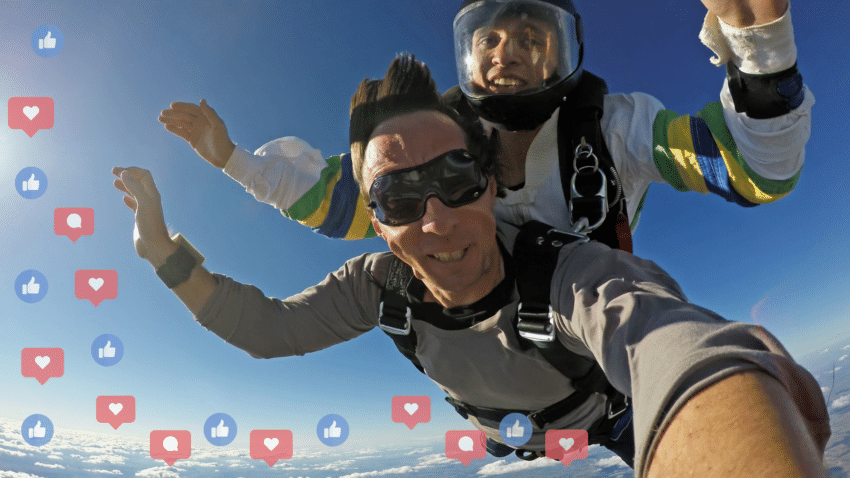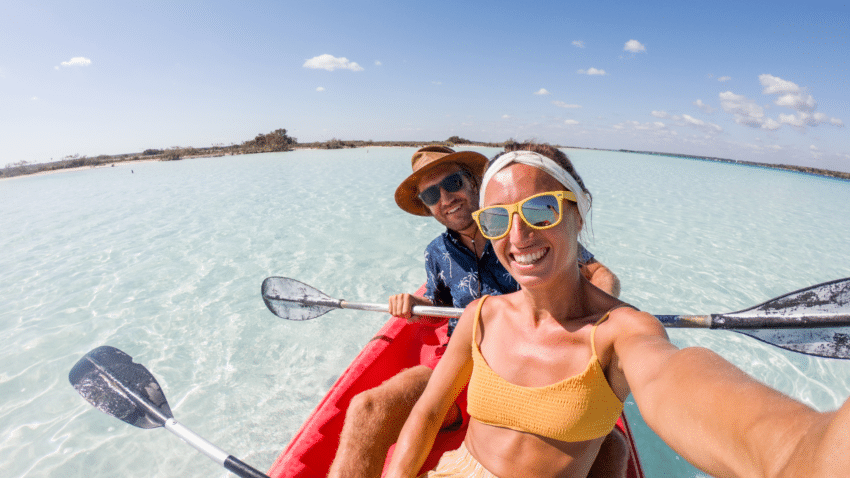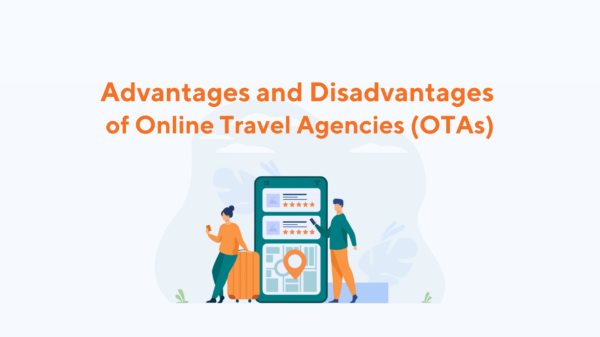In this article:
Craft great tour videos to inspire your customers
In the age of online visual content, video is a dynamic and hugely popular medium that can bring destinations to life, captivate potential travelers, showcase your tours and activities—and ultimately generate more leads and sales. Video marketing may be just what your tour business needs.

Picture this: You’re on the couch on a dark, drizzly January afternoon planning your summer vacation online. You come across a video on YouTube that begins with drone footage providing a birds-eye view of a breathtaking sunset over a pristine beach. Next, you’re eating breakfast at a quaint café, before finding yourself in the middle of a lively shopping street. Then you’re kayaking along the coast as evening approaches, before the video concludes with a romantic dinner on a terrace with a view of the same sunset that wowed you at the start. “Yes! This is the type of vacation we want,” you think. You see the video is part of a series on a travel company’s YouTube channel, so you forward a link to your partner, inviting them to check out some videos. Meanwhile, you visit the company’s website to explore more of what they offer.
This is an example of what Google calls an “I-want-to-get-away” travel micro-moment at the start of a typical travel customer journey, when people are dreaming of their ideal trip and looking for inspiration. A Google study found that 65% of travelers watch travel-related videos when thinking about taking a trip and exploring their options.
6 reasons video content is important for a tour company
Video marketing has become a transformative tool for travel businesses to inspire, engage, and connect with your audience. Here are five key reasons why video content should be a core part of any tour company’s marketing strategy:

- Provide a captivating visual experience: Video offers a multi-sensory experience, combining visuals, audio, and storytelling to create a more immersive experience than text. It’s an excellent way to capture viewers’ attention and make a lasting impression, especially at the discovery stage of their customer journey. It allows you to showcase the beauty of destinations, the fun and excitement of activities, and the variety of cultural and other experiences that await.
- Connect with travelers: Travel is an emotional experience, and video has the power to evoke those emotions in viewers, especially when compared with static text and images. By showcasing the joy, awe, and wonder of travel, videos can inspire and motivate potential travelers to explore new destinations or try new things. Done well, video content can create an emotional connection and desire to be a part of the experience shown.
- Build trust and authenticity: Video marketing for tourism allows you to build trust by showcasing real experiences, genuine interactions, and authentic testimonials. By providing an inside look into your offerings, you can position yourself as a credible and reliable tour company—something that is crucial for many travelers at the decision stage.
- Broaden your reach: Video content is highly shareable and has the potential to go viral. With the popularity of video-sharing platforms and social media, you can use video to reach a wider audience and attract new customers.

- Explain important things clearly: Video can be a good tool for presenting important information for travelers in a clear and engaging way. For example, some airlines have now augmented the traditional pre-takeoff safety demonstration with a video (for example, Air Canada’s safety video). According to a report by Wyzowl, 96% of people have watched an explainer video to learn more about a product or service.
- Build your competitive advantage: High-quality video content is a way to differentiate your company by showcasing your unique experiences, expertise, and brand identity. You can tell your stories, highlight your values, and communicate your value proposition in a compelling and visual way. Sixty percent of B2B and B2C marketers use video as part of their marketing strategy, according to the Content Marketing Institute.
Types of videos for different stages of the travel customer journey

Like all customer journeys, the travel customer journey includes three key stages. Let’s take a look at examples of the types of video content that can work at each stage.
Inspiration and awareness
Potential travelers are seeking ideas and exploring destinations.
- Destination highlight videos: Showcase the best attractions, landmarks, and natural wonders of a destination, providing a visual overview of what travelers can expect to experience on one of your tours. For example: “Think you know Singapore” by VisitSingapore addresses misconceptions about the country.
- Travel “vlogs” and influencer videos: Collaborate with travel influencers or vloggers to create destination-specific videos that add an authentic and personal touch. These videos offer an insider’s perspective, sharing experiences, recommendations, and hidden gems. For example, “A little surf fun” by Sonia’s Travels with Travel Mexico invites travelers on a Mexican vacation with her.
Consideration and evaluation
Potential travelers have narrowed down their options and are evaluating different tour companies or destinations.
- Tour and activity highlight videos: Showcase specific tours, activities, or itineraries to give viewers a glimpse into what they can expect. For example, G Adventures’ “Virtual tour of Mount Kilimanjaro” video provides an overview of an iconic trek.
- Testimonial and review videos: Create videos with real customer testimonials and reviews to provide social proof and build trust. For example, TCS World Travel created a testimonial video about their private jet travel experience.
Decision and booking
It’s decision time, when potential travelers are hopefully ready to book.

- “Why us?” videos: When making a final decision, many people look deeper at the companies they are thinking of booking with. A “Why us?” type video can give people a final nudge toward your company by showcasing what makes you different. For example, G Adventures’ “Why go with G Adventures?” video focuses on making a deeper connection with potential travelers.
- Limited-time offer and promotional videos: Create a sense of urgency by highlighting limited-time discounts, early bird offers, or exclusive deals to encourage potential travelers to take immediate action. For example, Travel Australia’s “Be the first” video invited New Zealanders to travel there first.
Storytelling techniques for engaging and memorable videos
Effective storytelling is the backbone of engaging and memorable videos. Here are a few ways to grab and hold the attention of viewers:

- Create a narrative: Develop a narrative arc that takes viewers on a journey, starting with an enticing hook, building up the excitement, and culminating in a satisfying resolution. A compelling story with relatable characters and emotional moments will leave a lasting impact.
- Showcase authentic experiences: Highlight real travelers and local guides, showcasing authentic interactions and genuine emotions. This humanizes the experience and establishes a connection with the audience, making the video relatable and trustworthy.
- Leverage stunning visuals: Capitalize on the beauty of destinations by capturing visually striking shots. Showcasing breathtaking landscapes, vibrant cultures, and unique activities will transport viewers and inspire them to explore the destination themselves.
- Keep it concise and engaging: Attention spans are short, so it’s important to keep videos concise and engaging. Engaging videos are more likely to be shared, commented on, and liked, leading to increased engagement, brand awareness, and potential bookings.
Quick start guide to creating your first tourism video

Ready to have a go at creating your first tourism marketing video? Here’s a quick guide to getting started:
- Define your purpose: What is the goal of your video (e.g. to inspire, educate, or showcase your offerings)? Clarify your target audience and the key messages you want to communicate.
- Plan your story: Develop a short script or storyboard that outlines the narrative, visuals, and key scenes. Consider how you want people to feel and what you want them to do.
- Capture engaging footage: Use a high-quality camera, smartphone, or even a drone to capture the footage you need. You can also incorporate still photos and graphics.
- Edit and enhance: Use video editing software or apps to create your final video. Add captions and music to bring the footage to life even more. Keep it short; 30 seconds (or even shorter) to two minutes long is a good length. Focus on the most compelling aspects of the destination or experience.
- Add a call-to-action (CTA): Guide viewers toward a desired action, such as visiting your website, social media channels, or booking platform to learn more or book. You can also invite them to subscribe to your newsletter or mailing list.
- Optimize for distribution: Choose the platforms and channels that align with your target audience and marketing goals, e.g. Instagram, YouTube, Facebook, etc., and optimize your videos for each specific channel.
- Amplify your reach: Use the power of social media, email marketing, and strategic partnerships to broaden the reach of your videos, and maybe even go viral.
After you have created your video and released it to the world, don’t forget to measure its success and impact. Monitor metrics such as views, shares, likes, conversions, and customer feedback to gain insights into what works and what needs to be improved.
HubSpot found that 85% of consumers want to see more video content from brands. The ease of production and lower cost of producing videos in recent years has made video one of your most powerful tools. There’s no better time to channel your inner Stephen Spielberg and produce the video content your customers want.
Search The Blog
Categories
Most Popular Articles
- 16 Innovative Tourism Business Ideas and Trends for 2025
- How to Get the Most Out of Guest Satisfaction Surveys
- Advantages and Disadvantages of Online Travel Agencies (OTAs)
- Your Marketing Mix: the 7 Ps of Travel and Tourism Marketing
- A Guide to Hiring in Tourism: Skills, Strategies, and Seasonal Staff





